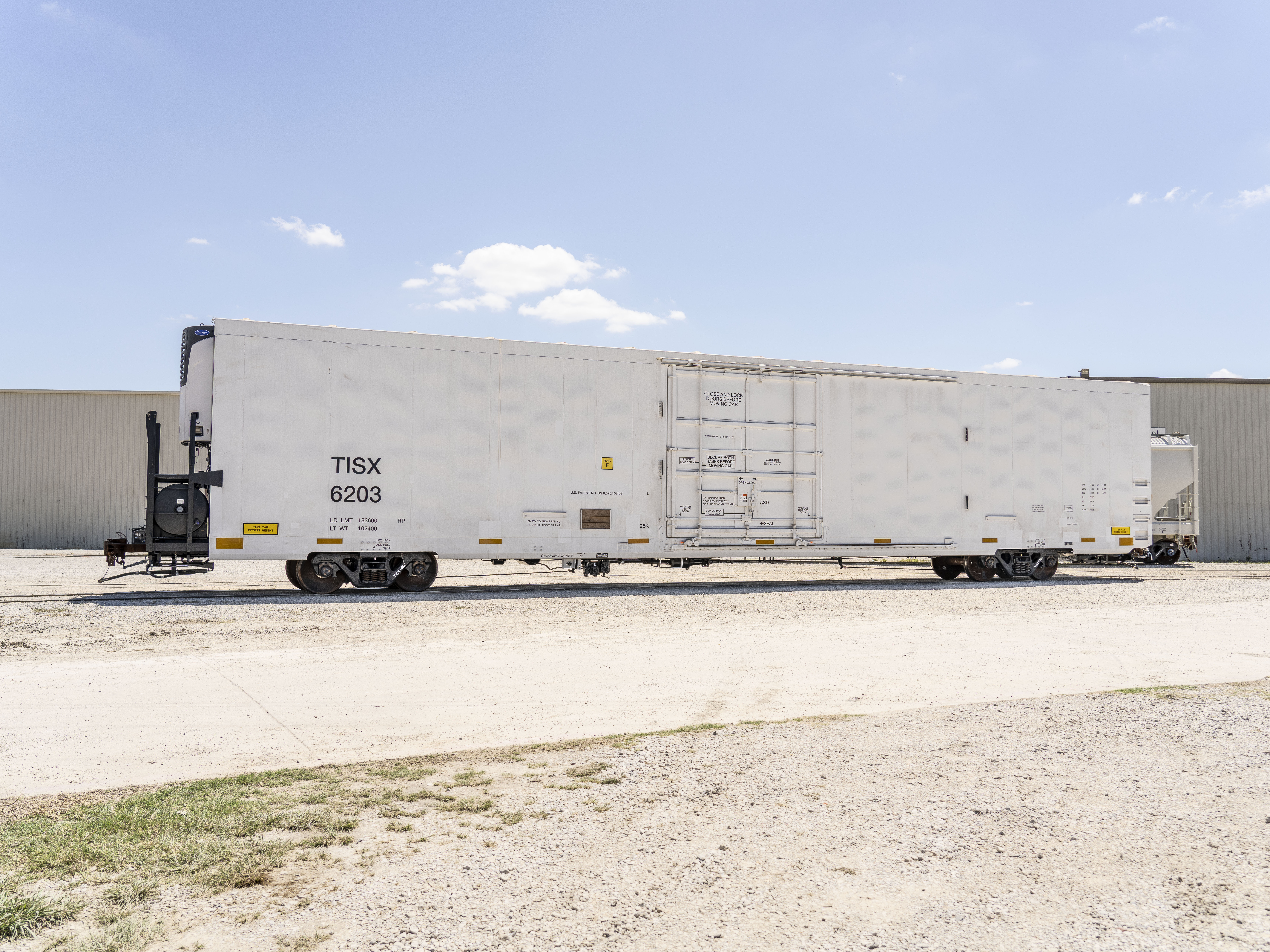Steel bars embedded in the beams are used to mechanically attach the primary floor to the railcar underframe. Because of the strength of the composite solution, TrinityRail removed 4,500 pounds of steel from the underframe. This weight reduction allows rail customers to haul two tons more product before hitting regulated weight caps. Fasteners and a patented adhesive from 3M combine the primary and secondary layers of the railcar floor while allowing for the elongation needed for the different coefficients of thermal expansion.
The multi-layer floor design also allows for a unique feature to customize air flow within the railcar and accommodate different loads. A top floor plate laid upon the corrugated aluminum extrusion secondary floor is punctuated by holes that work in tandem with the unsymmetrical corrugation pattern in the secondary floor. When the plates are oriented in one direction, the vent holes sit over open valleys in the corrugation. This allows HVAC return air to flow and vent ethylene emissions from fresh produce to help prevent overripening. Orienting the floor plates in the other direction moves the vent holes over the closed corrugations to lower the temperature for transporting frozen products. The switch is made using Southco quick-disconnect fasteners.
TrinityRail has successfully tested smaller segments of the flooring under simulated forklift testing, proving the solution could withstand a 25,000-pound forklift axle load. “Railcars are designed for a 50-year life, so we tested it to 100 and 150 years of life of use with that forklift and load on it,” Huck says.
The team has also built a prototype rail car to ship to the field for more extensive testing and feedback from customers. Meanwhile, the TrinityRail product development team is already applying lessons learned through this process to its next composites-based railcar solution.
“I can’t go into detail of what those are, but we are looking forward to continuing this process of implementing composites within the rail industry,” Huck says.
Megan Headley is a freelance writer in Fredericksburg, Va. She can be reached at megan@clearstorypublications.com.
Event Focuses on Tomorrow’s Transportation
While the railroad industry has a long history in the U.S., other forms of transportation are emerging. One that’s garnering a lot of interest is advanced air mobility. Learn more about this up-and-coming market at ACMA’s Advanced Air Mobility Composites Technology Days, a virtual program on Feb. 8 – 10, 2022. For more information, visit www.acma.today/AAMTechDay.

GFRP flooring reduces the weight of TrinityRail’s new 85-foot-long refrigerated boxcars by approximately 25% compared to floors with traditional materials.
Photo credit: TrinityRail


